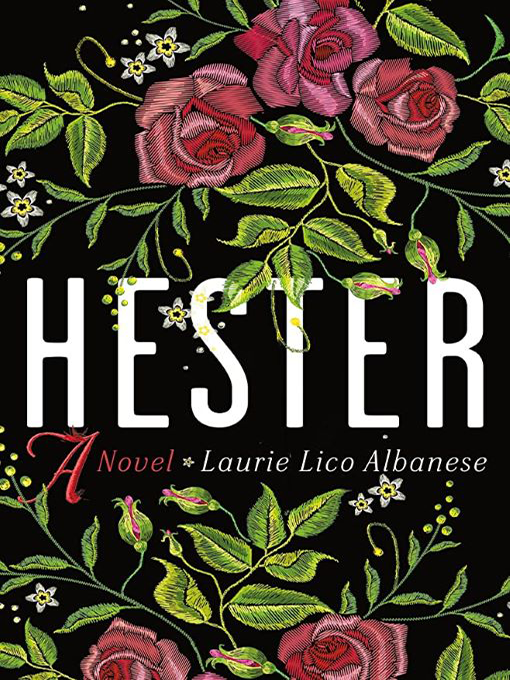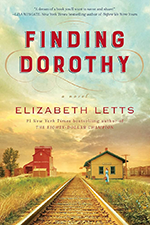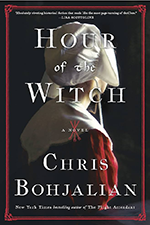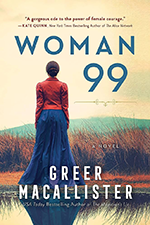
Hester
by Laurie Lico Albanese
GENRE: Historical Fiction, Literary Fiction, Retellings
Isobel Gamble is a young seamstress carrying generations of secrets when she sets sail from Scotland in the early 1800s with her husband, Edward. An apothecary who has fallen under the spell of opium, his pile of debts have forced them to flee Edinburgh for a fresh start in the New World. But only days after they've arrived in Salem, Edward abruptly joins a departing ship as a medic––leaving Isobel penniless and alone in a strange country, forced to make her way by any means possible.
When she meets a young Nathaniel Hawthorne, the two are instantly drawn to each other: he is a man haunted by his ancestors, who sent innocent women to the gallows––while she is an unusually gifted needleworker, troubled by her own strange talents. As the weeks pass and Edward's safe return grows increasingly unlikely, Nathaniel and Isobel grow closer and closer. Together, they are a muse and a dark storyteller; the enchanter and the enchanted. But which is which?
In this sensuous and hypnotizing tale, a young immigrant woman grapples with our country's complicated past, and learns that America's ideas of freedom and liberty often fall short of their promise. Interwoven with Isobel and Nathaniel's story is a vivid interrogation of who gets to be a "real" American in the first half of the 19th century, a depiction of the early days of the Underground Railroad in New England, and atmospheric interstitials that capture the long history of "unusual" women being accused of witchcraft. Meticulously researched yet evocatively imagined, Hester is a timeless tale of art, ambition, and desire that examines the roots of female creative power and the men who try to shut it down.

Laurie Lico Albanese is an award-winning novelist and journalist. In Hester, her acclaimed 2022 retelling of The Scarlet Letter from Hester Prynne’s point of view, Albanese brings Hester’s voice to life in a compelling tale that asks who was the real Hester Prynne, and what if she could tell her own story?
Answering a centuries-long literary mystery, Hester gives life, power, and voice to the woman Hawthorne cast into the role of scorned adulteress, and offers a fresh and empowered perspective on the source of her scarlet letter.
Illuminating the life of nineteenth century women alongside the Salem witch trials and Nathaniel Hawthorne’s emerging career, Hester is a rich tale about the price a woman pays for creativity and independence, and the many ways sisterhood is important to a woman’s survival in every age.
Hester is an Audible Best Books of 2022, an IndieNext and Canadian and American Librarians October 2022 selection, a Gillian Flynn Best Books of Fall 2022, a Book of the Month club selection, and a longlist finalist in the Goodreads Best Books of the Year.
Albanese’s novel Stolen Beauty, about Gustav Klimt’s famous portrait of Adele Bloch Bauer (aka the lady in gold) was praised by the Wall Street Journal as “a work of art itself.”
Albanese is a recipient of a Catherine R. Dodge Foundation Visiting Fellowship to the Virginia Center for the Creative Arts, a Hadassah-Brandeis Research Award, and a New Jersey State Council of the Arts Fellowship in Fiction Writing. She teaches creative memoir writing at Montclair State University and has taught at Wager College, and the Stonecoast Summer Writing Program at the University of Southern Maine. Her novels have been translated into Italian, Spanish, French, German, Portuguese and soon, Croatian. She lives with her husband in Montclair, NJ, where they raised their two grown children. - Authors Unbound
Publisher's Weekly
Albanese (Stolen Beauty) imagines in her standout historical the inspiration for The Scarlet Letter. Her proxy for Hester Prynne is Isobel Gamble, a skilled seamstress who has synesthesia and left her native Scotland for the U.S. in 1829 after her apothecary husband Edward's addiction to opium sent them to the poorhouse. Isobel's father paid their way out, and the couple took passage onboard a ship bound for America. Once stymied in her ability to express herself creatively, in Salem she uses her talents with needle and thread. She has a chance encounter with writer Nathaniel Hawthorne, recognizing in him a kindred spirit yearning for freedom, a spirit that moves Isobel to risk her life to protect people fleeing slavery. Later, her independent-mindedness leads to suspicions of adultery. Albanese describes Isobel's synesthesia brilliantly, such as in this memory of her cousins in a Scotland valley: "Their voices rise up in vibrant wisps of yellow and gold. The wind was sometimes fierce pink, and the sound of the waterfall on rocks glinted silver." Even those unfamiliar with the classic will be hooked by this account of a capable woman standing up to the sexist and racial prejudices of her time. (Oct.)
Kirkus Reviews
This novel reimagines The Scarlet Letter from the point of view of a woman who might have inspired Hester Prynne. Isobel Gamble is still a teenager when she emigrates from her native Scotland to Salem, Massachusetts, with her much older husband, Edward. Isobel comes from a long line of women with secret knowledge--her namesake is an ancestor known as Isobel Gowdie, Queen of Witches. But she's been taught since childhood to mask such knowledge, including her synesthesia, a condition that lets her see colors associated with sounds and letters. She's bent her energy to her skill at needlework, which has helped her support her family. With Edward, who's an apothecary, she believed she'd made a good marriage--until they ended up in the poorhouse because of his drug use. Salem is their second chance, but almost as soon as they arrive, he turns around and goes back to sea as a medic, leaving her almost penniless. Isobel gets to work and finds support from some people in the community. She also gets to know a tall and handsome young fellow named Nat Hathorne, a man she saw the day she arrived in town. Isobel is a red-haired beauty, and Nat's interest in her quickly turns into flirtation and more. The Salem witch trials are more than a century in the past, but Nat, an aspiring poet, is haunted by the role of his great-great-grandfather, John Hathorne, one of the most implacable judges in the trials. The trials haunt this book, too, woven through its story of Isobel, a woman who bears the bigotry of the town because she's an immigrant and a woman whose husband may have deserted her. The author has incorporated plentiful research about the witch trials and, in Isobel's present, the Underground Railroad. The rich details of life in Salem in the early 19th century, and especially about Isobel's creative work as a seamstress and designer, enliven the tale. Nathaniel Hawthorne plays an unexpected role in this lively fictional look at the origins of his masterpiece. Copyright (c) Kirkus Reviews, used with permission.
 Finding Dorothy
Finding Dorothy
by Elizabeth Letts
Hollywood, 1938: As soon as she learns that M-G-M is adapting her late husband’s masterpiece for the screen, seventy-seven-year-old Maud Gage Baum sets about trying to finagle her way onto the set. Nineteen years after Frank’s passing, Maud is the only person who can help the producers stay true to the spirit of the book—because she’s the only one left who knows its secrets.
But the moment she hears Judy Garland rehearsing the first notes of “Over the Rainbow,” Maud recognizes the yearning that defined her own life story, from her youth as a suffragette’s daughter to her coming of age as one of the first women in the Ivy League, from her blossoming romance with Frank to the hardscrabble prairie years that inspired The Wonderful Wizard of Oz. Judy reminds Maud of a young girl she cared for and tried to help in South Dakota, a dreamer who never got her happy ending. Now, with the young actress under pressure from the studio as well as her ambitious stage mother, Maud resolves to protect her—the way she tried so hard to protect the real Dorothy.
 Hour of the Witch
Hour of the Witch
by Chris Bohjalian
Boston, 1662. Mary Deerfield is twenty-four-years-old. Her skin is porcelain, her eyes delft blue, and in England she might have had many suitors. But here in the New World, amid this community of saints, Mary is the second wife of Thomas Deerfield, a man as cruel as he is powerful. When Thomas, prone to drunken rage, drives a three-tined fork into the back of Mary's hand, she resolves that she must divorce him to save her life.
But in a world where every neighbor is watching for signs of the devil, a woman like Mary—a woman who harbors secret desires and finds it difficult to tolerate the brazen hypocrisy of so many men in the colony—soon becomes herself the object of suspicion and rumor. When tainted objects are discovered buried in Mary's garden, when a boy she has treated with herbs and simples dies, and when their servant girl runs screaming in fright from her home, Mary must fight to not only escape her marriage, but also the gallows.
 Woman 99
Woman 99
by Greer Macallister
When Charlotte Smith's wealthy parents commit her beloved sister Phoebe to the infamous Goldengrove Asylum, Charlotte knows there's more to the story than madness. She commits herself to the insane asylum, surrendering her real identity as a privileged young lady of San Francisco society to become a nameless inmate, Woman 99.
The longer she stays, the more she realizes that many of the women of Goldengrove Asylum aren't insane, merely inconvenient—and her search for the truth threatens to dig up secrets that some very powerful people would do anything to keep.